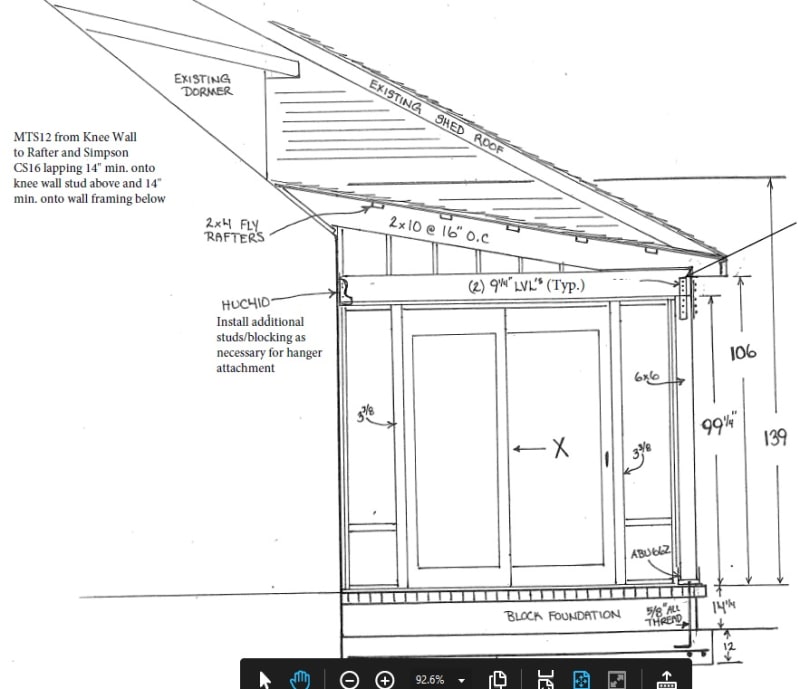MOOSE123
Structural
- Aug 23, 2021
- 6
I'm a 42 year old professional engineer. In school I chose the "structural" discipline as my focus for my civil engineering degree. However, I've spent the majority of my 18 years in transportation. I'm working on the engineering analysis for the addition of a glass sunroom. The foundation is to be 8"x16" concrete block on 24" x12" depth continuous concrete footing. The new sunroom is 12' x 11'. The roof is a shed roof framed from the existing house. The roof consists of 2x10 rafters @ 16" o.c. The rafters are supported by a (2) 1-3/4" x 9-1/4" LVL. The rafter support beam is supported by two 6x6 posts on the corners of the new sunroom. I need to analyze the uplift to make sure the beam to post connection is sufficient. The new sunroom is located along the coast of North Carolina where the basic design wind speeds are 130 mph per the north carolina residential building code. I've been getting help/training from a former classmate of mine but I think he's getting tired of the emails and phone calls. I'm self employed so I don't have a colleague I can ask for help. I've been reviewing ASCE 7-10 and I have Enercalc and have been trying to figure this out but I want to make extra certain that I'm doing this right which I'm sure I'm not at the moment. I wish there was an example or something I could follow. Looks like you can determine a negative pressure, then what? Use that pressure and a tributary area the post is supporting and multiply to get the uplift force and subtract the dead load to get the ultimate uplift force that connection needs to account for?


